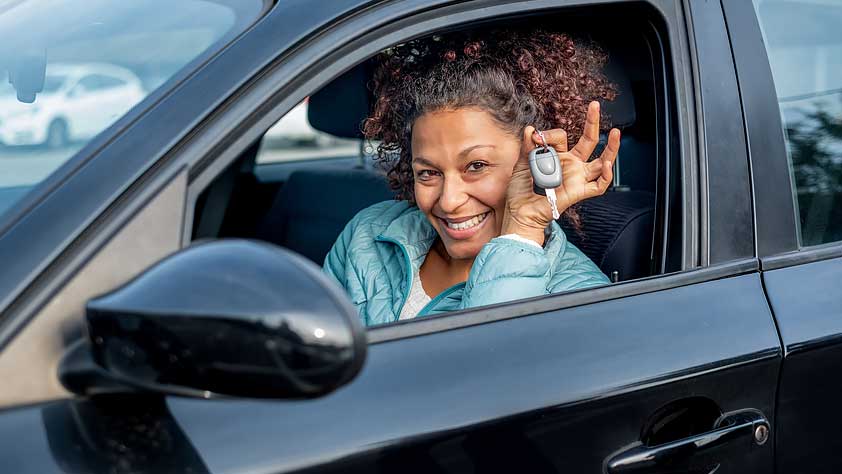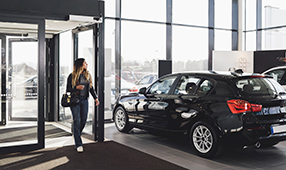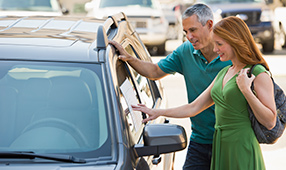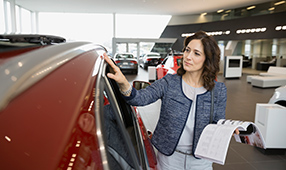Key takeaways
- Use online resources to research cars, financing and insurance
- Create your own car-shopping calendar to target the lowest prices, best incentives and most favorable deals
- Save time by using services that bring vehicles right to your front door
Planning to buy a new car? While there are many “sweet spots” for car buying during the year, some of the best times to buy a car may not easily fit into your packed teaching schedule.
For example, car prices can be deeply discounted between October and December, but that’s a tough time to add car shopping to a calendar packed with new-school-year duties and activities, preparing for testing and cramming before winter break.
The good news: There are plenty of other times when educators can find a great car deal. Do your research, and you’ll be well-prepared to pick the right car at the best price with the least amount of stress. Try these three steps to do just that.
1. Spend your least-busy times doing research
Do your homework during your less-busy periods when you can take more time, suggests Alain Nana-Sinkam, Vice President of Strategic Initiatives for TrueCar, which powers the NEA Auto Buying Program.
Programs such as the NEA Auto Buying Program can help you research and compare different models, types of vehicles and features upfront. Identify the most important aspects of your next vehicle, such as body style, amount of room, efficiency versus performance and reliability. Then look into finance versus lease options. This is also a great time to compare insurance quotes. That way, Nana-Sinkam says, “when the time comes, you’ll be ready to move fast.”
You can find additional tools to help you check car features, reviews and opinions at Edmunds, Kelley Blue Book, Autotrader and Consumer Reports among others. See price ratings on the car you want so you know when you’re getting a fair deal. Consult NEA’s “Checklist to Buy a Car with Confidence” for more shopping tips and criteria to consider.
What if you find a few cars you like but you’re not ready to buy? “Offers on the NEA Auto Buying Program are time based—usually 30 days” and “incentives, rates and lease deals can change every month,” Nana-Sinkam says, but “registering will allow you to keep track of the types of vehicles you have considered so you don’t have to start all over when you pick things back up later.”
2. Create a personal car-shopping calendar
Make a list of your more flexible times during the year. After you block out scheduled schoolwork, extra-curricular activities, medical appointments, planned family events and other fixed commitments, you’ll be able to see your potential car shopping windows.
Compare the open spots in your calendar to these known car discount periods when dealers are most eager to sell:
- Holiday three-day weekends: President’s Day, Memorial Day, Independence Day (Fourth of July), and Labor Day
- Black Friday
- At the end of each month when dealers want to meet sales quotas
- At the end of the year, especially the end of December when buyers can find maximum savings
- At the end of the model year, usually late summer
- At the end of a car model’s lifespan—before a car will be discontinued or redesigned.
“Some of the best times to shop for a car include the end of the model year (usually late summer) when dealers are looking to sell the last of the outgoing model year vehicles in anticipation of the arrival of the new ones,” says Nana-Sinkam. Another good time is at “the end of the month, quarter or year, when dealers may be motivated to hit sales targets set by ownership or the manufacturer,” he adds.
3. Take advantage of remote shopping
Have the car come to you! As many states asked citizens to shelter in place during the novel coronavirus COVID-19 pandemic, many car dealers made it easier for customers to shop from home. Virtual tours let you see how a car looks both outside and inside. Select vehicles can even be delivered to your home for pre-purchase test drives.
The NEA Auto Buying Program recently introduced “Buy From Home” to help make buying a car easier, says Nana-Sinkam. “Dealers who are able to deliver your new vehicle remotely are highlighted with a Buy From Home badge,” he adds. “This means you can handle paperwork, get a value for your trade-in, and receive your new vehicle without having to visit the dealership.”
Timing tips from fellow teachers
Avoid buying during the back-to-school rush. Deborah Geiger, who taught 7th and 8th grades for 37 years before she retired in 2018, hired a broker to help her buy the first car she purchased as a new teacher. Although that proved to be expensive, she believes it was worth the cost because “I learned a lot,” Geiger says. She got a good buy on a car she was happy with, and, because she paid attention and wrote down all the questions the broker asked during the process, she also learned what she needed to know to confidently buy future cars on her own.
Geiger also learned what not to do. She bought that first car in August— a very busy month for teachers. A less busy time would have been better. This also meant her license, registration and insurance renewals would all be due in August—not a budget-friendly month for teachers.
Her advice? Do your research first, then buy in the spring. By spring, your school routines and relationships are already established so you have more time and energy to devote to researching and buying the right car for you, she adds.
Geiger always buys the previous year’s model because the car is still new, but prices are lower than the newest model. Her last purchase—in spring, of course—was a Jeep Grand Cherokee, which she still loves.
Use your salary schedule to your advantage. Spring was also good timing for 2nd grade teacher Elizabeth Kelley, but for a different reason.
“We found the best time to buy a car for us was late April to early May,” says Kelley. “As a teacher in Arizona, my district provides performance pay and what we call 301 money.” Kelley explains that it’s a lump sum added to one of their last paychecks of the year.
When Kelley was ready to buy, she had already done her homework. “At the time I was driving about 18 miles each way on the freeway and wanted something with great mileage,” Kelley says. She had researched gas mileage, safety ratings and price range. Although local dealers weren’t offering large incentives or deals at that time of year, Kelley shopped around for the best deal and bought a used, previous year Kia in perfect condition with very few miles on it.
Kelley’s 301 money, plus having her income divided over 26 pay periods, gave her a larger check at the end of the school year that she could use to buy a car.












